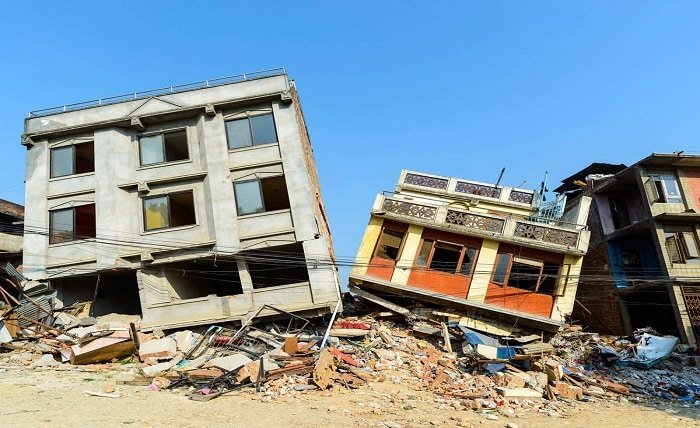Delhi and its surrounding areas have experienced several earthquake tremors in the past few months, causing panic and fear among the residents. The most recent one was on March 22, 2023, when a powerful earthquake of magnitude 6.6 struck the Hindu Kush region in Afghanistan, and was felt in Delhi-NCR and other parts of north India. Although no major damage or casualties were reported, the frequent earthquakes have raised concerns about the seismic vulnerability of the region and the preparedness of the authorities and the public. In this blog post, we will explain why Delhi is prone to earthquakes, what the possible impacts and risks are, and how to stay safe and prepared for the seismic threat.
Why is Delhi prone to earthquakes?
Delhi is located in seismic zone IV, which means it is highly susceptible to earthquakes. This is because Delhi lies close to three major fault lines: the Himalayan fault, the Sohna fault, and the Delhi-Haridwar ridge fault. These fault lines are the boundaries between the tectonic plates that make up the earth’s crust. When these plates move or collide, they create stress and strain in the crust, which is released in the form of earthquakes.
The Himalayan fault is the most active and dangerous fault line, as it is the result of the collision between the Indian plate and the Eurasian plate. This collision has created the Himalayan mountain range, which is still rising at a rate of about 2 cm per year. The Himalayan fault is responsible for some of the deadliest earthquakes in history, such as the 2005 Kashmir earthquake, the 2015 Nepal earthquake, and the 2023 Afghanistan earthquake.
The Sohna fault and the Delhi-Haridwar ridge fault are the local fault lines that run through the Delhi-NCR region. These fault lines are also active and capable of producing moderate to strong earthquakes. For example, the Sohna fault was the source of the 1960 Delhi earthquake, which had a magnitude of 6.0 and caused extensive damage to buildings and infrastructure.
What are the possible impacts and risks of earthquakes in Delhi?
The possible impacts and risks of earthquakes in Delhi depend on various factors, such as the magnitude, depth, location, and duration of the earthquake, as well as the population density, building quality, and emergency response of the region. Some of the possible impacts and risks are:
- Loss of lives and injuries: Earthquakes can cause fatalities and injuries due to the collapse of buildings, bridges, flyovers, and other structures, as well as the falling of objects, debris, and electric wires. People can also get trapped under the rubble or suffer from shock, trauma, and infections. According to a study by the National Disaster Management Authority (NDMA), a major earthquake of magnitude 7.5 or more in Delhi could result in more than 80,000 deaths and 6 lakh injuries.
- Damage to property and infrastructure: Earthquakes can cause damage to property and infrastructure due to the cracking, tilting, or sinking of buildings, roads, railways, pipelines, and other facilities. The damage can also affect the supply of water, electricity, gas, and communication, as well as the transportation and health services. According to the same study by the NDMA, a major earthquake in Delhi could cause a loss of more than Rs 2 lakh crore to the economy.
- Social and psychological impacts: Earthquakes can cause social and psychological impacts such as displacement, homelessness, loss of livelihood, disruption of education, and breakdown of law and order. Earthquakes can also trigger panic, fear, anxiety, depression, and post-traumatic stress disorder among the survivors and the affected communities.
How to stay safe and prepared for the seismic threat?
The best way to stay safe and prepared for the seismic threat is to adopt a comprehensive approach that involves prevention, mitigation, preparedness, response, and recovery. Some of the key steps are:
- Prevention: This involves taking measures to reduce the exposure and vulnerability of the people and the assets to the earthquake hazard. For example, enforcing strict building codes and standards, retrofitting existing buildings, avoiding construction in high-risk areas, and conducting regular inspections and audits.
- Mitigation: This involves taking measures to reduce the severity and impact of the earthquake hazard. For example, strengthening the critical infrastructure, diversifying the economic activities, enhancing the insurance coverage, and creating awareness and education programs.
- Preparedness: This involves taking measures to enhance the readiness and capacity of the people and the authorities to cope with and respond to the earthquake hazard. For example, developing and updating the disaster management plans, conducting drills and mock exercises, establishing early warning systems, and stocking emergency supplies and equipment.
- Response: This involves taking measures to provide immediate relief and assistance to the affected people and areas during and after the earthquake. For example, activating the emergency operations centers, mobilizing the rescue and medical teams, evacuating the people to safe shelters, and restoring the essential services and communication.
- Recovery: This involves taking measures to restore and rebuild the normalcy and functionality of the affected people and areas after the earthquake. For example, clearing the debris and rubble, repairing and reconstructing the damaged buildings and infrastructure, rehabilitating and resettling the displaced people, and providing psycho-social support and counseling.
Conclusion
Earthquake is a serious and inevitable threat for Delhi and its surrounding areas, as the region lies in a high seismic zone and has a high population density and a low preparedness level. Earthquakes can cause devastating impacts and risks, such as loss of lives and injuries, damage to property and infrastructure, and social and psychological impacts. Therefore, it is imperative to stay safe and prepared for the seismic threat, by adopting a comprehensive approach that involves prevention, mitigation, preparedness, response, and recovery. We hope this blog post has helped you to understand how to stay safe and prepared for the earthquake in Delhi. If you have any questions or feedback, please feel free to leave a comment below.

